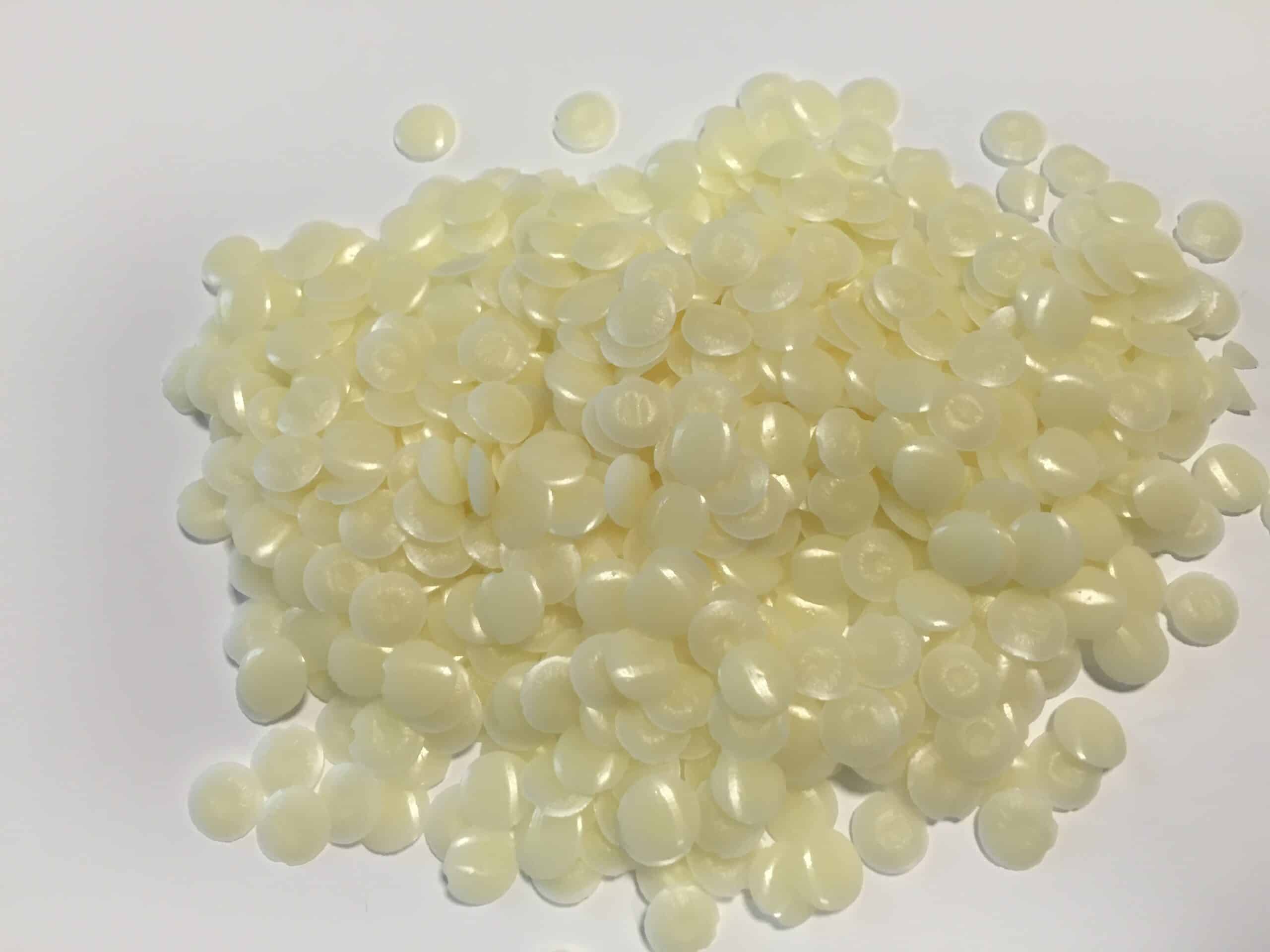Sunflower wax

A new natural raw material is extracted
Bio-beeswax, like sunflower wax, has accompanied mankind on its long path to civilisation. Even the world’s oldest advanced civilisations used beeswax to mix cosmetics, seal ships, prepare writing tablets and make illuminants. Biowaxes have been pushed back by synthetic equivalents in recent decades. However, in the context of urgent sustainability efforts and dwindling oil reserves, bio-axes are gaining in importance again.
Origin and extraction
A relatively new development in this natural products market is sunflower wax. The cosmetics industry, in particular, is beginning to use this type of wax as an alternative to beeswax. Sunflower wax is produced from the oil of the sunflower (INCI: Helianthus Annuus Sunflower Seed Oil). The heliotropic plant originates from North America, but is now also cultivated on a large scale in Europe and Russia. There are two types of sunflower oil, the high-oleic oil and the native oil. The high-oleic oils come from plants that have been modified by breeding (not genetic engineering) and yield four times the amount of oleic acid. These oils are mainly used in industry and as frying and deep-frying oil. The native oil of the cultivation-unmodified sunflower is used in healthy natural food cuisine as well as in cosmetics production as a mild and inexpensive base oil. The high-oleic type also attracts cosmetic attention because it is oxidation-stable as a base oil and can be easily incorporated into daily preparations with oils of the B-0 group. In samples of unrefined sunflower oil, a cloudy sediment is sometimes found. This sediment is caused by the fine wax layer with which sunflower seeds are coated. The delicate vanilla-yellow sunflower wax is obtained by gently refining virgin sunflower oil. It is a promising new natural raw material for industrial and cosmetic applications.
Modern appearance of an ancient plant
Sunflower oil is a natural oil that has been used since time immemorial. The sunflower was considered a blessed plant by the Indians of Mexico many millennia before the birth of Christ. Sunflower wax, on the other hand, has only come into focus in recent years. Yet the future could belong to sunflower waxes. Experts have observed the increase of microplastics in the food chain with growing concern. What the normal consumer does not know is that tiny plastic particles made of polyethylene are found as fillers and exfoliants in a variety of cosmetic products such as toothpastes and shower gels. These non-biodegradable particles have entered the food chain via wastewater and have been detected in drinking water and food. A new process developed by the Fraunhofer Institute for the Environment could provide a remedy by making it possible to produce microparticles from natural waxes on a large scale. Sunflower wax is the first choice as a raw material here, because the wax can be supplied in the required quantities and at low cost. In addition to industrial use, sunflower oil and the sunflower wax refined from it play an important role in natural cosmetics.
Sunflower wax – the properties
The melting point of the delicate vanilla-yellow wax pellets is between 75 and 80 degrees Celsius. Sunflower wax has excellent oil-binding properties. It forms a pleasant, protective film on the skin. Adding it to cosmetic products such as lip balms, creams and body butters makes them firmer and more stable in consistency. The wax can be added to the cosmetic in a quantity ratio of up to 5 %. Sunflower wax is often compared to beeswax, but has three advantages over it: It is cheaper; it has a higher melting point; and it is vegan. Sunflower wax emulsifies very quickly and forms high-gloss, slightly viscous and opaque creams in cosmetics production. No part of the sunflower wax melts below 55°C, so this wax provides very good heat stability. The fragrance is very delicate, unobtrusive: products based on sunflower wax thus leave plenty of scope for fragrance creations. All in all, sunflower wax has proven to be a vegan and inexpensive alternative to beeswax in proven cosmetic applications. A separate field of application of sunflower oil and sunflower wax, which is well proven in its effectiveness, is hair care products. The oil not only cares for the hair, but also provides it with vitamins and helps against dryness and dandruff. Micro-fine sunflower wax particles form synergies with keratin: a natural repair effect is set in motion. The tiny wax particles are the tried and tested basis of natural hair styling products. At low doses, extremely natural, mouldable and long-lasting styling is possible. This means that natural cosmetics have also gained ground in the hair styling market.
Fact Sheet:
CAS number: 999999-99-4
INCI: Helianthus Annuus Seed Cera
Function: consistency enhancer, co-emulsifier
Trade names:
Kahlwax 6607 L (Kahl & Co.KG)
Sunflower Wax (KosterKeunen).
Main ingredients: C42-C60 ester (C20-C32 fatty alcohols esterified with C20-C28 fatty acids)
This wax has a great future
Sunflower wax is the raffinate of the oil of one of mankind’s oldest useful and cosmetic plants. As a natural substitute for polyethylene microparticles, sunflower wax is on the threshold of a new large-scale use. In cosmetics, it can act as a vegan and inexpensive equivalent to beeswax. Its high melting point, its ability to emulsify quickly and its skin-friendliness make it an important basic product in cosmetics production. Feel free to ask us if you would like us to optimise your products with sunflower wax as well.
Literature:
- „Natural Waxes-Properties, Compositions and Applications“, E. Endlein, K.-H. Peleikis, SOFW 04/2011
- eigene Erfahrungen
- Antioxidant effect of mono- and dihydroxyphenols in sunflower oil with different levels of naturally present tocopherols. Hrádková I, Merkl R, Smidrkal J, Kyselka J, Filip V.Eur J Lipid Sci Technol. 2013 Jul;115(7):747-755. doi: 10.1002/ejlt.201200293.
- Vegetable Butters and Oils as Therapeutically and Cosmetically Active Ingredients for Dermal Use: A Review of Clinical Studies. Poljšak N, Kočevar Glavač N.Front Pharmacol. 2022 Apr 25;13:868461.
- Isosorbide Di-(Linoleate/Oleate) Stimulates Prodifferentiation Gene Expression to Restore the Epidermal Barrier and Improve Skin Hydration. Bojanowski K, Swindell WR, Cantor S, Chaudhuri RK.J Invest Dermatol. 2021 Jun;141(6):1416-1427.e12
